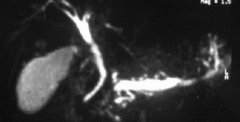读医学网
2011年CTS家庭机械通气指南
发布时间:2014-05-20 09:25 类别:呼吸系统疾病 标签:Canadian Thoracic Society greatest 来源:丁香园
More than 50 years ago individuals with polio courageously led the challenge of maintaining mechanical ventilation outside of institutions and quietly initiated a more independent, patient-centered and collaborative approach to respiratory health care. Today, the drivers for home mechanical ventilation (HMV) are different. The rising costs of hospital care, the advent of commercially available noninvasive masks and positive pressure ventilators, have fuelled greater demand for HMV. However, the desire of individuals to maintain a quality of life (QoL) in their homes remains the prevailing impetus. The present HMV clinical practice guideline is intended to be a resource for physicians, healthcare providers, policymakers and individuals at risk for or currently using ventilatory support in the home. The objective is to identify and support ventilated patients who are presently at home, as well as those transitioning to home-based care, where QoL is the greatest and costs are minimized. Developed by The Canadian Thoracic Society (CTS), these guidelines intend to provide the most up-to-date information and evidence-based recommendations to enable practitioners to manage the provision of preventive airway management and home ventilation.
These guidelines are composed of disease-specific sections in addition to overriding subjects such as ethical considerations, transition to home and airway clearance. In the discipline of respiratory medicine there are extremely few prospective or randomized trials. As a result, most recommendations are based on retrospective or descriptive studies and, to a great extent, on consensus of the CTS HMV committee.
Recommendations strive to achieve a balance between an exceptional standard of care illustrated in the literature and the reality of healthcare in Canada where geographicalhealth care and economic barriers may require compromise to ensure the availability of the best care possible. This approach may also allow greater applicability to jurisdictions where, for example, polysomnography may be unavailable or so difficult to obtain as to present unacceptable barriers to appropriate, timely introduction of noninvasive ventilation (NIV). Nevertheless, some subjects considered to be important by the committee are not addressed in the literature. Some jurisdictions have access to provincial ventilator pools, in which equipment and knowledgeable health care professionals are available at relatively minimal cost, to ensure the success of HMV. The literature does not address questions regarding government-funded equipment pools. On important issues for which literature is lacking, but strong expert opinion was available, recommendations were made by the HMV Guideline Committee.
No article in the literature, to our knowledge, addressed the appropriate addition of a back-up ventilation system aside from patients fully ventilated through a tracheostomy; accordingly, it remains uncertain as to precisely when an individual on NIV should have an additional ventilator or when alarms should be required. The general recognition that NIV is not designed for full 24h life support has resulted in this uncertainty. However, patients are, in fact, using 24h NIV, without which they are at risk for acute respiratory failure. This area of risk management will need attention in future investigation.Throughout the recommendations; it is assumed (aside from that clearly stated in the section on Transition to Home) that appropriate training will be provided to patients and caregivers.
These guidelines do not address negative-pressure body ventilators or abdominal ventilators because positive-pressure ventilators have, with few exceptions, completely replaced negative-pressure ventilators in the home. Although potentially of significant clinical value in the follow-up of patients on NIV, no recommendations are made on the use of digital information and downloads from bilevel devices. Additional research is desperately needed to address many of these critical questions.
- 猜你会喜欢....





